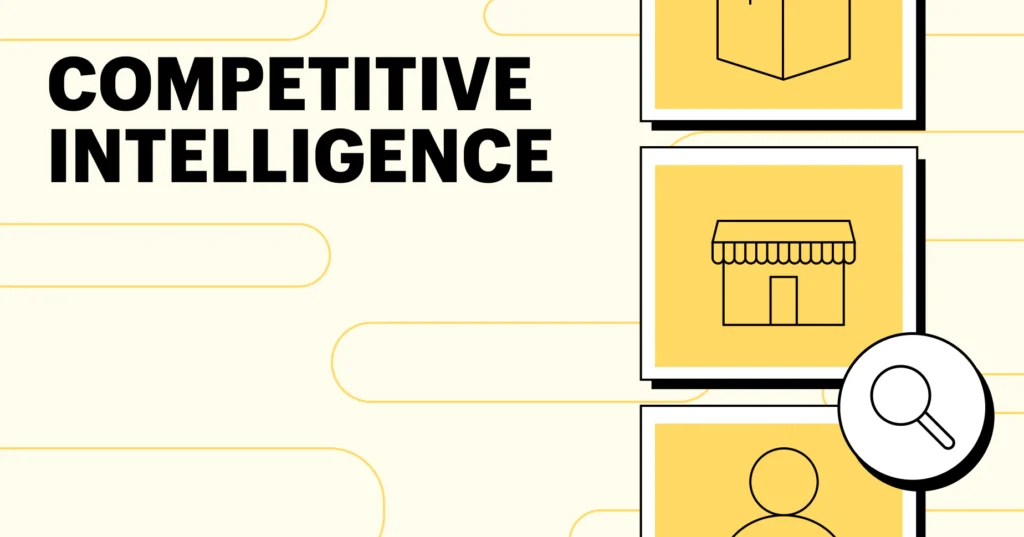In the fast-paced and ever-evolving landscape of today’s business world, staying ahead of the competition is paramount for sustained success. This is where Competitive Intelligence (CI) emerges as a crucial strategic tool for organizations seeking to understand, anticipate, and respond effectively to market dynamics. In this comprehensive exploration, we delve into the concept of Competitive Intelligence, its methodologies, and the significant impact it can have on shaping a company’s competitive edge.
Understanding Competitive Intelligence:
Competitive Intelligence is the systematic process of collecting, analyzing, and interpreting information about competitors, market trends, and the broader business environment. It goes beyond mere data collection; it involves transforming raw information into actionable insights that inform strategic decision-making. The goal is to provide decision-makers with a comprehensive understanding of the competitive landscape, enabling them to make informed choices and respond proactively to emerging challenges and opportunities.
The Methodology of Competitive Intelligence:
- Data Collection: The first step in the Competitive Intelligence process is gathering relevant information. This involves monitoring a myriad of sources, such as public records, financial reports, industry publications, social media, and more. Advanced tools and technologies play a vital role in automating data collection, ensuring a constant flow of real-time information.
- Analysis: Once the data is collected, it undergoes rigorous analysis to extract meaningful patterns, trends, and insights. This phase often involves the use of data analytics, statistical models, and machine learning algorithms to discern actionable intelligence from the vast sea of information.
- Interpretation: The interpreted data is then translated into actionable intelligence that decision-makers can use. This step is critical in bridging the gap between raw data and strategic decision-making. Effective interpretation involves understanding the implications of the information within the context of the organization’s goals and the broader market landscape.
- Dissemination: The final step involves disseminating the intelligence to relevant stakeholders within the organization. This ensures that decision-makers across various departments have access to the insights necessary for informed decision-making. The timely distribution of intelligence is essential for responding quickly to changes in the competitive landscape.
The Significance of Competitive Intelligence:
- Strategic Decision-Making: Armed with accurate and timely intelligence, organizations can make informed strategic decisions. Whether entering new markets, launching new products, or adjusting pricing strategies, CI provides the necessary insights to navigate complex decisions effectively.
- Risk Mitigation: Identifying potential risks in the competitive landscape is crucial for mitigating threats to the business. Whether it’s a new entrant, shifting consumer preferences, or regulatory changes, CI allows organizations to anticipate challenges and develop proactive strategies to address them.
- Innovation and Adaptation: CI not only helps in understanding current market trends but also aids in predicting future shifts. This foresight enables organizations to innovate and adapt to changing market dynamics, ensuring they stay ahead of the curve and maintain a competitive advantage.
- Resource Optimization: By understanding competitors’ strengths and weaknesses, organizations can optimize their resources more effectively. This includes adjusting marketing strategies, fine-tuning product offerings, and allocating resources strategically to maximize impact.
- Customer Satisfaction: Competitive Intelligence doesn’t just focus on competitors; it also includes understanding customer needs and preferences. By staying attuned to customer sentiments and expectations, organizations can enhance customer satisfaction and loyalty.
Challenges in Implementing Competitive Intelligence:
While the benefits of Competitive Intelligence are undeniable, organizations often face challenges in its implementation:
- Data Overload: The sheer volume of available data can be overwhelming. Organizations must invest in advanced analytics tools and expertise to sift through the noise and extract meaningful insights.
- Ethical Concerns: The ethical collection of competitive intelligence is paramount. Crossing ethical boundaries, such as industrial espionage or unauthorized data access, can lead to legal and reputational consequences.
- Real-Time Monitoring: The business landscape evolves rapidly, requiring real-time monitoring. Establishing effective systems for continuous data collection and analysis is a challenge that organizations must address to stay ahead.
- Interpreting Ambiguous Data: Some information may be ambiguous or open to interpretation. Skillful interpretation is crucial to ensure that decision-makers receive accurate and actionable insights.
Conclusion:
In an era where change is the only constant, Competitive Intelligence emerges as a linchpin for organizational success. It is not merely a function; it is a mindset that permeates an organization, fostering a culture of adaptability, innovation, and strategic agility. As technology continues to advance, the role of CI will only become more pivotal in guiding businesses through the complexities of the modern business landscape. Organizations that embrace and master Competitive Intelligence will not only survive but thrive in the face of uncertainty, ultimately shaping the future of their industries.




